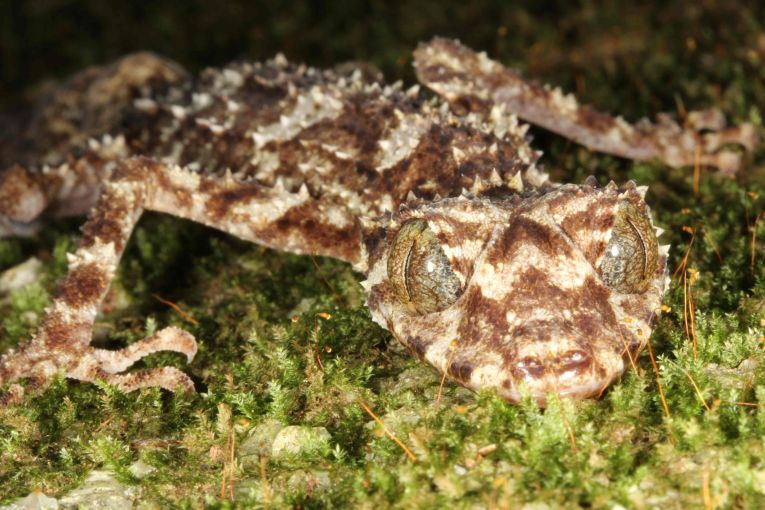When first setting foot on the small mountains around Cape Melville, Conrad Hoskin of James Cook University in Townsville, Queensland and Tim Laman of Harvard University in Massachusetts were bemused by the 15km (9 mile) range and its inhabitants.
The tropical forest trees and unique endemic creatures that surrounded them were a surprise, surrounded as they were by hot dry forest types. Nobody has ever penetrated hundreds of meters up the giant granite boulders that surround the mountains and prevent easy entrance or exit for larger animals and humans.
Conrad had first spotted the isolated rain forests on Goggle's satellite images. Getting over the rocky hazards, literally, the pair landed on top of Cape Melville by helicopter. No good! The flat boulder on which they alighted allowed them no way down. Luckily the helicopter relocated them elsewhere, but the event gives an idea of the nature of the terrain all around the Cape Melville rainforest.
Once they got started, the pair found that hoop pines and foxtail palms grew among the mossy rocks. The forests have been isolated in the mountains for millennia. The three new species were gathered over the next few days, beginning with an endemic shade skink, Saproscincus saltus. This species resembles other members of its genus in Eastern Australia, but lives near to trees on the boulder-strewn landscape. Its daytime habit, and long legs and digits suit it well to a rocky habitat, unlike its relatives.
A brown-spotted microhylid boulder frog, Cophixalus petrophilus was next seen on the "tops," where little vegetation can protect or camouflage them. Here in the shade from rocks, the species rests during the dry season. Yet it still produces live young in the wet season, when you would imagine it could breed in water like its relatives. It has lovely big saucer eyes to gather more light in its shady habitat.
Third on the shopping list was a beautifully-camouflaged leaf-tailed gecko, Saltuarius eximius, which is a real relict species, related to Phyllurus and other leaf-tailed relatives. These reptiles go back a long way. In fact they did exist in Gonwanaland, before Australia wandered off on its own, and can still be found as far away as Madagascar. Their long, spindly legs and equally big eyes help them in the dark, again adaptive for the rocky terrain.
Tim Laman reported, "What's really exciting about this expedition is that in a place like Australia, which people think is fairly well explored, there are still places like Cape Melville where there are all these species to discover." In fact, 6 species are now endemic to Cape Melville, simply because of its beautiful isolation. National Geographic Expeditions Council funded the useful trip after Tim had led a biodiversity expedition to nearby Cape York recently.










